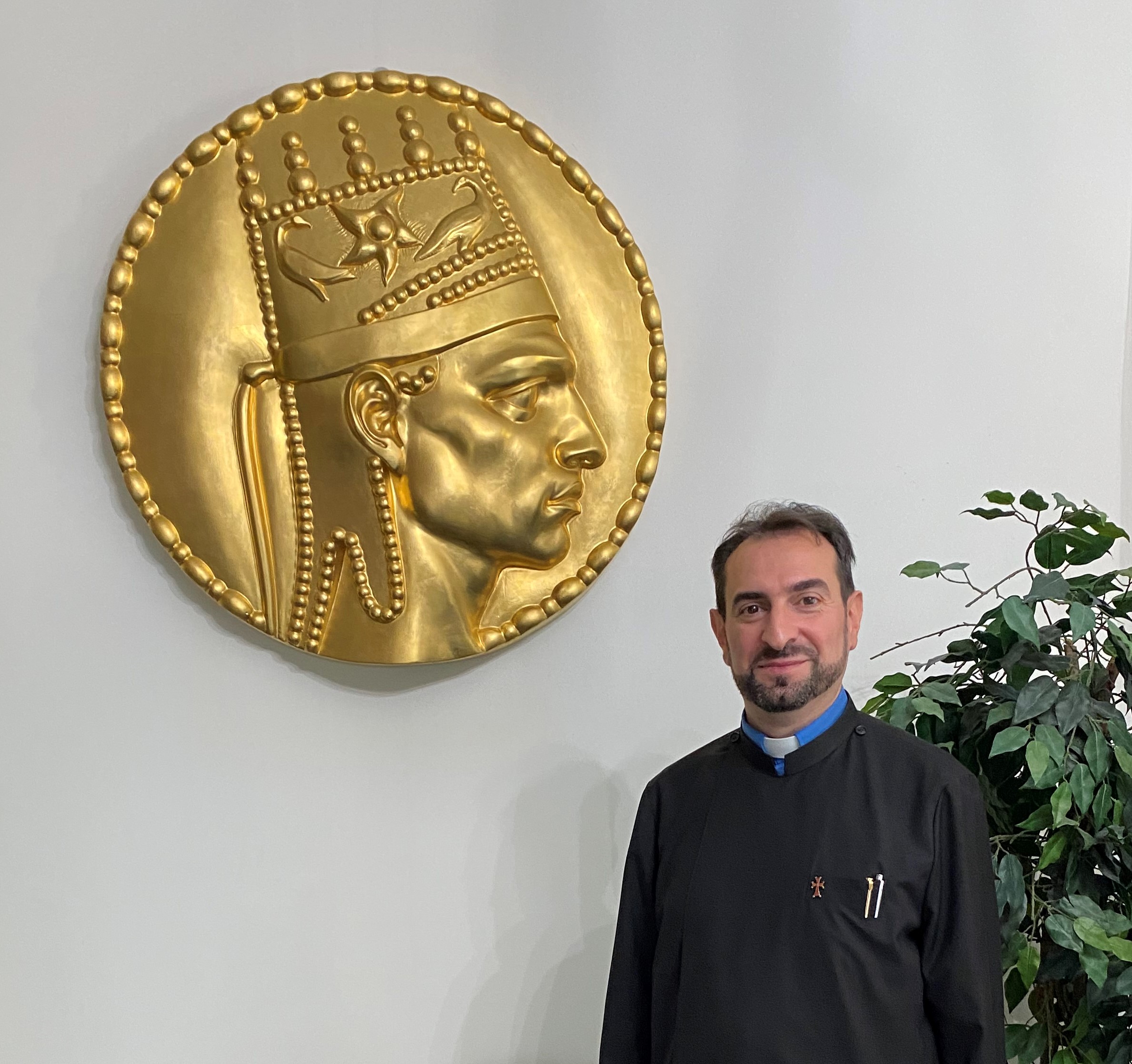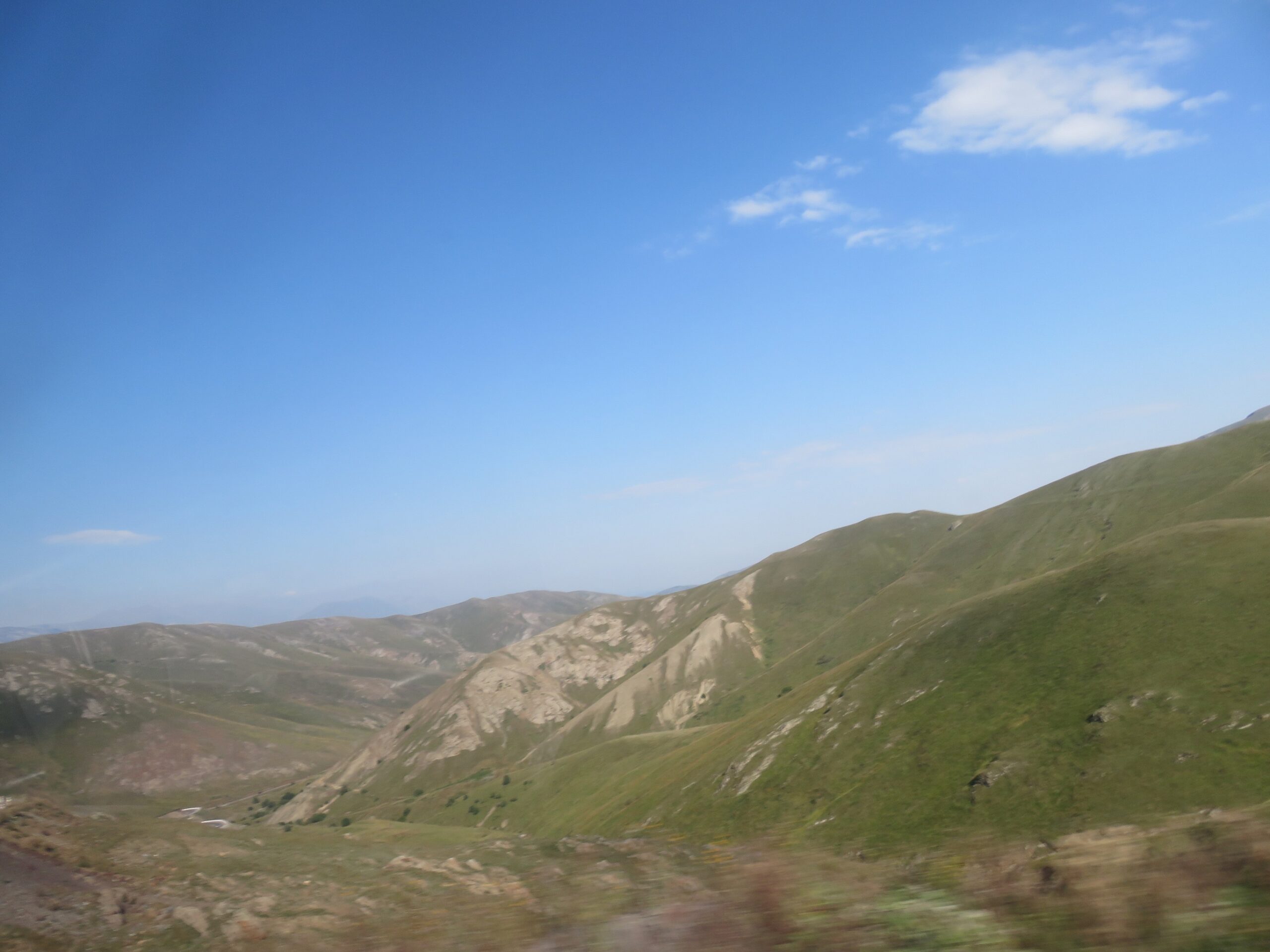By Catherine Tsounis
“He made the Republic of Rome tremble before the powers of his arms.” – Cicero1
The Armenian Apostolic Church of the Holy Martyrs, Bayside, has a circular gold plague on display of the greatest Armenian King, Tigran or Tigranes II the Great who ruled from 96 to 56 B.C.. “There is only one other plague of Tigran like ours,” said Rev. Fr. Dr. Abraham M. Malkhasyan. He added, “Aryans refers to ancient persons. The Armenians were part of the Aryans. Greeks are part of these ancient persons.” An afternoon of Ancient Armenian culture triggered my interest in an ancient people that shaped our Greek identity in the Byzantine empire.
To understand a people is to see them from their own viewpoint. The Armenian National education Committee published “Armenia in Ancient and Medieval Times” by Robert Bedrosian that reveals his amazing life. Armenia reached its greatest geographical size under Tigran. He moved westward capturing lands lost to Iran. Tigran campaigned deep into Iran. His partner in his conquest was the Greek Pontian King Mithridates VI of Pontus He married his daughter Cleopatra. Together they took Syria and Phoenicia. The famous city of Antioch was captured in 86 B.C. He went as far as Egypt, Palestine, so that Armenian’s borders stretched from the Caspian Sea to the Black Sea to the Mediterranean. It was now the largest state in Asia Minor.

He built a new capital city named Tigranagerd, meaning built by Tigran. It was never completely finished, but was probably a mixture of Greek and Iranian styles, just as Tigran himself was. Latin and Greek writers, who provide much of our information on Tigran, said that he had a theater built. Greek actors were invited to perform in their own language.2
Although the entire region was oriental in all traditions, under the influence of the scholarly Greek Pontian Queen Cleopatra,, Greek manners and culture were to a certain degree introduced into the kingdom. The royal princes were taught the Greek language and sciences. Tigran himself, called upon to occupy the throne of the Seleucidae, could not have been a stranger to Greek art and letters. Despite some objectionable aspects of his social, domestic and public life, Tigran deserves honor as a torch-bearer of Hellenistic culture. “The two great kings of Pontus and Armenia,” says Jacques de Morgan, “were the last ones capable of reproducing in their states the beautiful civilization of Hellas.”
However, great though Tigran II was in ability, the empire created by him was doomed to be short-lived and a mere flash of lightning in history because of Roman ruthlessness and the mad audacity of his father-in‑law Mithridates. His father-in-law was beaten by the Romans and went to Armenia for help. Other historians give us a different picture of Tigran, who in answering a demand by Roman General Lucullus for the surrender of Mithridates, replied: “The whole world and my own conscience would condemn me if I should surrender the father of my wife to the enemy.”

After defeats and wars, Tigran surrendered to Rome. At the time of his empire’s peak, Armenia was in the middle of two empires, the Roman in the West and Iran in the East. For much of its history Armenia was a buffer state. Tigran died in 56 BC. Tigran the Great had been unique in his country’s history, and why he, notwithstanding his mistakes and defeats, represents a brilliant page in the story of Armenia.3 Stop by the Holy Martyrs Armenian Apostolic Church and the plague of Tigran the Great. For more information, visit https://www.facebook.com/frabraham.malkhasian.
References:
1. https://www.reddit.com/r/history/comments/74syre/ancient_texts_on_tigran_the_great/
2. .Bedrosian, Robert. Armenia in Ancient and Medieval Times, Armenian National Education Committee, New York, 1985, pp. 34-36.
3. https://armenian-history.com/history/ancient/tigran-the-great/









